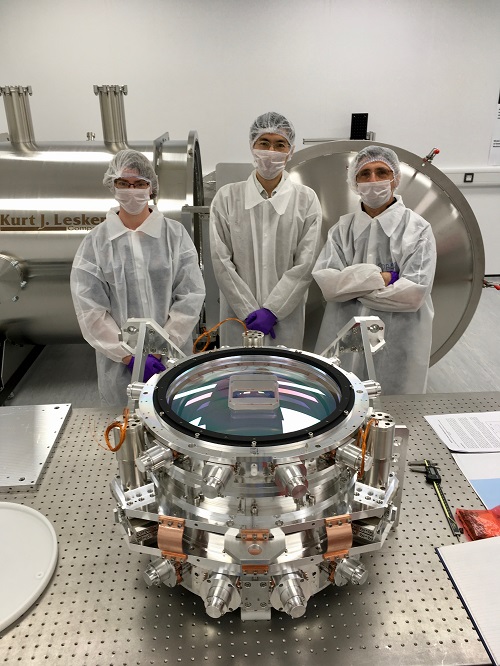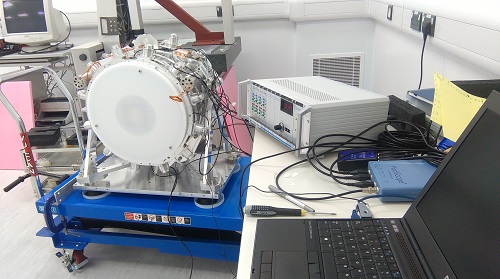Submitted by Administrator on Thu, 04/04/2019 - 14:04
Institutes at the University of Cambridge, and specifically the Cavendish Laboratory, the Kavli Institute for Cosmology, and the Institute of Astronomy, are in charge of designing, assembling, aligning and testing the six cameras of MOONS, the next generation optical/near-infrared multi-object spectrograph for ESO’s Very Large Telescope.

Image: Assembled MOONS camera in the clean room.
Among the tests that the cameras have to pass is to endure "maximum earthquake” conditions (earthquakes are unfortunately not uncommon on Cerro Paranal -Atacama Desert-, where the VLT telescope is located). This test has been performed on the first of the six cameras, currently assembled in the Cavendish clean room. The test (heartstopping for those of us who have worked so long on this project) has implied essentially hitting the camera with the equivalent of a massive soft-headed hammer to produce an impulse characteristic of an earthquake. The camera was subject to an acceleration of more than 3 g (three times stronger than gravity acceleration on Earth). After the multiple shocks the optics (lenses and mirror) returned to their original position within a few microns, greatly exceeding the requirements.

Image: MOONS camera during earthquake test with multiple sensors wired to the monitoring system.
Congratulations to David Sun for having designed such an excellent mechanical housing of the optics, resilient to such extreme shocks, and many thanks to Martin Fisher for successfully performing such a difficult test.


